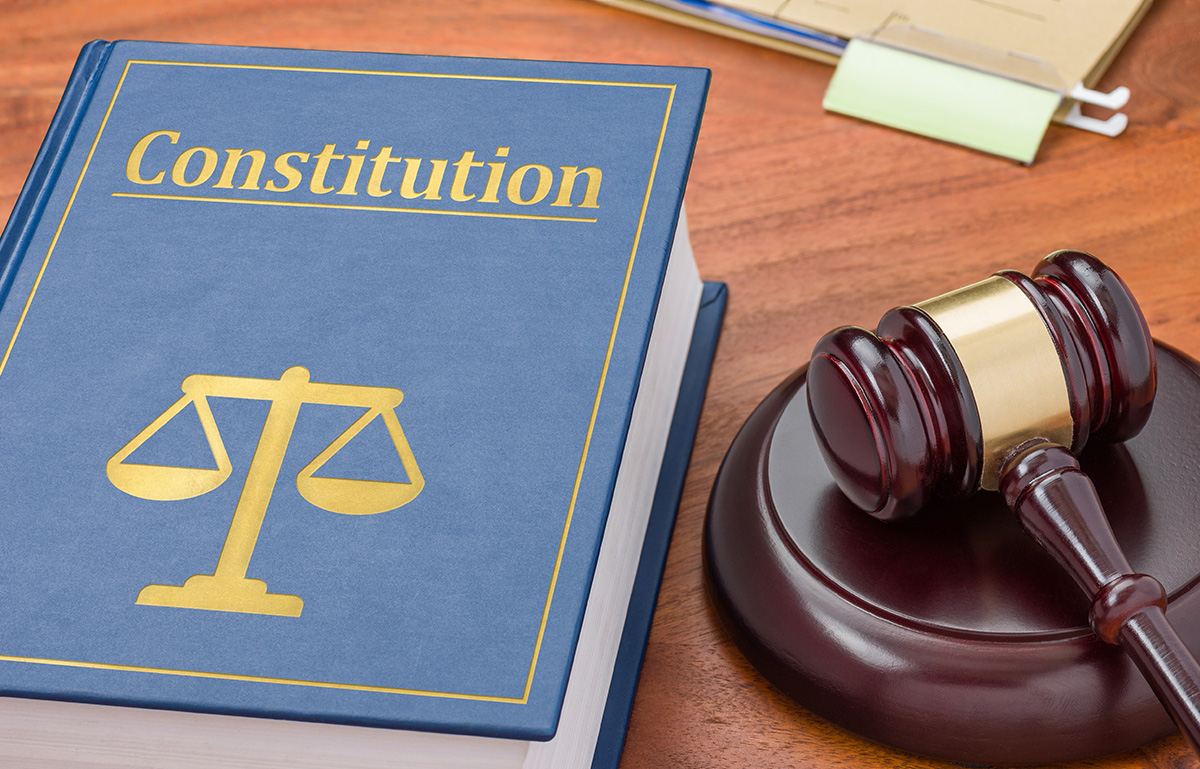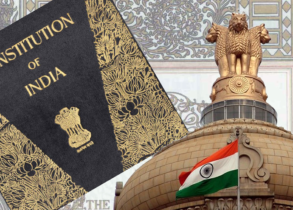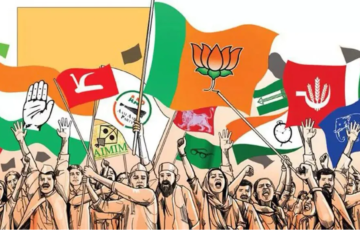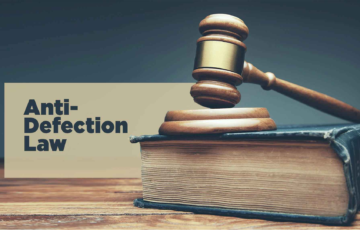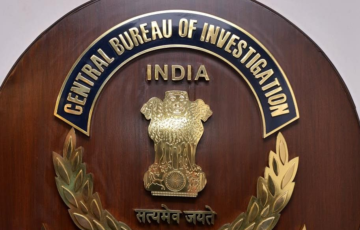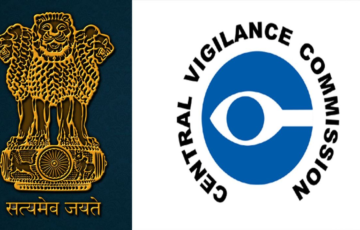AMENDMENT OF THE CONSTITUTION
Introduction
- The Indian Constitution is a synthesis of both flexibility and rigidity, with a procedure that allows Parliament to amend the Constitution and its procedure. Article 368 in Part XX of the Constitution states that Parliament can amend any provision of the Constitution by addition, variation, or repeal, but cannot amend those that form the ‘basic structure’ of the Constitution. This was ruled by the Supreme Court in the Kesavananda Bharati case1 (1973), making the Indian Constitution neither as easy nor as difficult as the British or American Constitutions.
Procedure for amending the Indian Constitution
- The procedure for amending the Indian Constitution The procedure for amending the Indian Constitution is outlined in Article 368 and follows a meticulous process to ensure that any changes made to the Constitution align with the nation’s evolving needs and maintain the integrity of its basic structure.
- Initiation of Amendment: An amendment to the Constitution can be initiated only by introducing a bill for this purpose in either the Lok Sabha or the Rajya Sabha, which are the two Houses of Parliament. State legislatures do not have the authority to initiate constitutional amendments.
- Sponsorship of the Bill: The bill can be introduced by a minister or by a private member of Parliament. Unlike some legislative processes, introducing a constitutional amendment bill does not require prior permission from the President of India.
- Special Majority: The bill must be passed by both Houses of Parliament by a special majority. This special majority requires a majority of the total membership of each House and a majority of two-thirds of the members present and voting. This stringent requirement emphasizes the significance of constitutional amendments.
- Separate Passage: Each House of Parliament must pass the bill separately. In the event of a disagreement between the two Houses, there is no provision for holding a joint sitting to resolve the dispute. Each House must independently agree to the amendment.
- Ratification by States: If the amendment seeks to modify federal provisions of the Constitution, it must also be ratified by the legislatures of at least half of the states. This ratification is achieved by a simple majority, meaning a majority of the members present and voting in the state legislatures.
- Presidential Assent: After the bill is duly passed by both Houses of Parliament and ratified by the required number of state legislatures, if applicable, it is presented to the President of India for their assent. The President has a constitutional obligation to provide assent and cannot withhold it or return the bill for reconsideration by Parliament.
- Constitutional Amendment Act: Once the President gives their assent, the bill becomes an Act, specifically a constitutional amendment act. With this transformation, the Constitution is altered according to the provisions stipulated in the Act.
Necessity of Constitutional Amendments
- Constitutional amendments are a necessary and integral part of any democratic system. They allow the constitution to adapt to changing circumstances, address new issues, and correct any shortcomings in the original framework. In the context of India, the necessity of constitutional amendments can be illustrated with various examples:
- Social and Economic Change: India is a diverse country with a rapidly changing social and economic landscape. Over the years, amendments to the Constitution have been essential to introduce reforms in areas such as land rights, reservation policies, and economic policies. For example, the 73rd and 74th Amendments were introduced to empower local self-government bodies (Panchayats and Municipalities), allowing them to play a more significant role in rural and urban development.
- Legal Framework: Constitutional amendments are necessary to bring the legal framework in line with the evolving needs of society. For example, the 44th Amendment Act in 1978 restored some of the civil liberties and freedoms that were curtailed during the Emergency. It was necessary to correct those restrictions and protect individual rights.
- New Rights and Protections: As society evolves, new rights and protections may be needed. For instance, the 103rd Constitutional Amendment Act (2019) added provisions for providing 10% reservation for economically weaker sections in educational institutions and public employment. This was a response to the changing dynamics and demands for equitable opportunities.
- Balancing Fundamental Rights: Constitutional amendments can also be crucial for balancing fundamental rights. For example, the 42nd Amendment Act in 1976 introduced the word “Secular” in the Preamble of the Indian Constitution, emphasizing the country’s commitment to secularism. This amendment was seen as necessary to balance the exercise of religious freedoms with the state’s duty to be secular.
- Federal Relations: In a federal system like India, the distribution of powers between the central and state governments may need adjustment. Constitutional amendments can clarify, redefine, or delegate powers as required. The 101st Constitutional Amendment Act in 2016, for example, introduced the Goods and Services Tax (GST) system, which required significant changes to the fiscal and taxation powers of the central and state governments.
- International Commitments: International agreements and commitments may necessitate changes to the constitution. For instance, to comply with international treaties or agreements, India may need to amend its laws and constitution. The Nuclear Liability Law, introduced after the Indo-US Civil Nuclear Agreement, required changes to the Indian legal framework.
Types of Amendments
- Amendment by Simple Majority of Parliament:
- Amendments in this category can be passed with a simple majority in both Houses of Parliament. A simple majority means that there are more “yes” votes than “no” votes among the members present and voting.
| Provisions that can be amended via Simple Majority |
|
- Amendment by Special Majority of Parliament and Ratification by State Legislatures (Under Article 368):
- Amendments in this category also necessitate a “special majority” in Parliament, as defined in Article 368. Additionally, they must be ratified by the legislatures of at least half of the states in India.
- Such amendments relate to crucial matters like the election of the President of India, the extent of the executive power of the Union and the states, the structure and functioning of the Supreme Court and high courts, the distribution of legislative powers between the Union and the states, representation of states in Parliament, the power of Parliament to amend the Constitution, and the procedures for such amendments. These amendments address core aspects of the Constitution and its federal structure.
| Provisions that can be amended via Special Majority Parliament and Ratification by State Legislatures |
|
- Amendment by Special Majority of Parliament (Under Article 368):
- This category, governed by Article 368 of the Indian Constitution, requires a more stringent “special majority” in Parliament. It entails a majority of the total membership of each House and a two-thirds majority of the members present and voting.
- Amendments falling into this category encompass changes to Fundamental Rights, Directive Principles of State Policy, and all other provisions not covered by the first and third categories. These amendments pertain to fundamental aspects of the Constitution and its governance.
- These categories provide a structured framework for the amendment process, reflecting the varying degrees of significance and impact that different amendments can have on the Indian Constitution. The differential majority requirements and the involvement of state legislatures in some amendments are key mechanisms to maintain the balance between flexibility and rigidity in the Indian Constitution. This balance ensures that fundamental principles and values are preserved while allowing for necessary adaptations to meet the evolving needs of the nation.
| Drawbacks of Constitutional Amendments |
|
Criticism of The Amendment Procedure
- Complex and Lengthy Process: Critics have argued that the amendment process is often overly complex and lengthy, making it challenging to effect necessary changes promptly. For example, when India sought to implement the Goods and Services Tax (GST), it required a constitutional amendment. The process involved a prolonged negotiation with states, leading to significant delays.
- Federalism Concerns: The requirement for ratification by state legislatures in certain cases has led to concerns about unequal representation. For example, when the States Reorganization Act was passed in 1956, reorganizing states on linguistic lines, it required the consent of the affected states’ legislatures. Critics argue that this created an uneven playing field in the amendment process.
- Lack of Popular Referendums: The amendment procedure does not involve direct participation of citizens through referendums. This has been criticized, especially when significant changes that affect the rights and lives of citizens are proposed. For example, there has been ongoing debate about whether certain constitutional changes, such as the Uniform Civil Code or the reformation of personal laws, should be subjected to a referendum.
- Absence of Constitutional Review: Critics argue that the amendment procedure does not provide for a constitutional review body to evaluate proposed amendments. An example is the controversy surrounding the 42nd Amendment Act in 1976, which granted Parliament the power to amend any part of the Constitution, leading to concerns that it might undermine the Constitution’s basic structure.
- Political Misuse: The potential for amendments to be misused for political purposes has been a subject of criticism. For example, the 93rd Amendment Act in 2005, which introduced the concept of “creamy layer” for reservation in education and public employment, was criticized by some for political motivations rather than genuine social justice objectives.
- Lack of Transparency: Critics have pointed out that the amendment process can lack transparency, and there are instances when important constitutional changes have been passed without extensive public debate. For instance, the National Judicial Appointments Commission (NJAC) Act, which sought to alter the process of judicial appointments, was criticized for its lack of transparency.
- Complexity in Determining Basic Structure: The “basic structure doctrine” has sometimes been criticized for its ambiguity in determining what constitutes the “basic structure” of the Constitution. Different interpretations have led to debates about whether specific amendments infringe upon the core principles of the Constitution.
- Inadequate Public Awareness: Critics argue that many citizens are not fully aware of ongoing amendments or their implications. For instance, the 99th Amendment Act and the National Judicial Appointments Commission Act were met with limited public awareness or understanding.
| Views of Eminent Leaders on Amendment |
|
UPSC PREVIOUS YEAR QUESTIONS
1. In India, which one of the following Constitutional Amendments was widely believed to be enacted to overcome the judicial interpretations of Fundamental Rights? (2023)
(a) 1st Amendment
(b) 42nd Amendment
(c) 44th Amendment
(d) 86th Amendment
2. Consider the following statements: (2022)
1. A bill amending the Constitution requires a prior recommendation of the President of India.
2. When a Constitution Amendment Bill is presented to the President of India, it is obligatory for the President of India to give his/her assent.
3. A Constitution Amendment Bill must be passed by both the Lok Sabha and the Rajya Sabha by a special majority and there is no provision for joint sitting.
Which of the statements given above are correct?
(a) 1 and 2 only
(b) 2 and 3 only
(c) 1 and 3 only
(d) 1, 2 and 3
3. Consider the following statements: (2013)
1. An amendment to the Constitution of India can be initiated by an introduction of a bill in the Lok Sabha only.
2. If such an amendment seeks to make changes in the federal character of the Constitution, the amendment also requires to be ratified by the legislature of all the States of India.
Which of the statements given above is/are correct?
(a) 1 only
(b) 2 only
(c) Both 1 and 2
(d) Neither 1 nor 2
4. Consider the following statements: (2019)
1. The 44th Amendment to the Constitution of India introduced an article placing the election of the Prime Minister beyond judicial review.
2. The Supreme Court of India struck down the 99th Amendment to the Constitution of India as being violative of the independence of judiciary.
Which of the statements given above is/are correct?
(a) 1 only
(b) 2 only
(c) Both 1 and 2
(d) Neither 1 nor 2
5. With reference to the Constitution of India, consider the following statements: (2019)
1. No High Court shall have the jurisdiction to declare any central law to be constitutionally invalid.
2. An amendment to the Constitution of India cannot be called into question by the Supreme Court of India.
Which of the statements given above is/are correct?
(a) 1 only
(b) 2 only
(c) Both 1 and 2
(d) Neither 1 nor 2
6. “Parliament’s power to amend the Constitution is a limited power and it cannot be enlargedinto absolute power.” In the light of this statement explain whether Parliament under Article 368 of the Constitution can destroy the Basic Structure of the Constitution by expanding its amending power?(2019)

